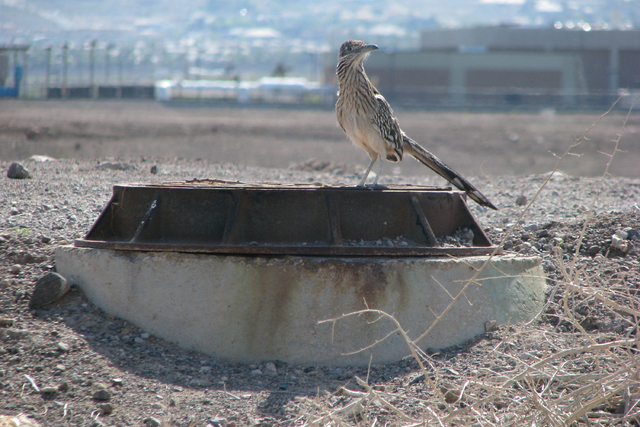Want to go birdwatching?

Springtime in the desert is the premier birdwatching season, when thousands of avian visitors follow a major international flyway northward as winter retreats.
The birds flying through seek stopovers where they can find food, water and shelter. In this arid part of the country, birds naturally congregate in the few sites with an abundance of water. Desert rivers and lakes, scattered wetlands, urban parks and golf courses with ponds, grass and trees provide what they need.
The Henderson Bird Viewing Preserve remains one of the best areas in Southern Nevada to observe the passing parade of winged travelers. More than 250 species of birds have been spotted at the preserve, with the greatest diversity found during the spring migration. The site is traditionally one of several used for the Audubon Society’s critical Christmas Bird Count, which helps keep track of bird populations.
Located near the Henderson water treatment facility, this 100-acre resource utilizes recycled water in its nine ponds. On its north side, the preserve borders the Clark County Wetlands Park, which helps filter runoff water from the Las Vegas Valley before it enters Lake Mead.
The preserve site became popular with local birders decades ago as birds were naturally attracted to the water processed by the Henderson sewage treatment plant. Local officials and bird-watchers worked together in planning this preserve, which opened to the public in 1998.
To reach the preserve, follow U.S. Highway 93/95 or Boulder Highway south into Henderson. At Galleria Drive, exit the freeway and turn left. Drive about 2 miles, crossing Boulder Highway, to reach the preserve’s access road one block before Moser Drive. Turn left and continue about 300 yards to the entrance to the landscaped parking area and adjacent visitor center. Visitors sign in at the center, which is the entrance to the preserve.
The Henderson preserve is open daily free of charge. Visitors must arrive at least 30 minutes before the preserve’s afternoon closure. The best bird viewing is early in the day. Hours of accessibility change with the seasons. The preserve is open from 7 a.m. to 2 p.m. in winter through February. From March through May, hours are 6 a.m. to 2 p.m. In summer, the preserve closes at noon. In the fall, the preserve is again open from 6 a.m. to 2 p.m.
The visitor center is a valuable source of information on birds, native plants, desert wildlife and programs and events at the site, such as bird-watching classes and walks. You’ll want to browse through the nature-related items stocked in the preserve’s gift shop, such as toys, games, books, posters, clothing and souvenirs. For more information, call the visitor center at 702-267-4180.
Be sure to take note of the map of the facility, which details the network of trails linking the ponds, observation stations and blinds, picnic spots, seating areas and facilities for water and restrooms. Most of the trails meet standards of accessibility for disabled visitors. One popular trail includes a boardwalk above wetlands near the edge of a pond. Several simple observation blinds conceal visitors behind sections of board fencing with cutouts. There are benches for sitting and enjoying the views throughout the preserve.
The facility uses native plants for landscaping, which encourages resident birds to stick around and draws in native wildlife such as coyotes, ground squirrels, jackrabbits and cottontails, water turtles, snakes and lizards. The ponds, marshy wetlands and islands appeal to waterfowl, shorebirds, gulls and wading birds. The native plants and varied habitat attract songbirds and hummingbirds. The abundance of prey also draws eagles, hawks, owls and other avian hunters.
Visitors should wear layered clothing and sturdy footwear. There won’t be much shade, so apply sunscreen and wear a hat. Carry extra drinking water. Keep children out of the water and leave the dog at home.
Margo Bartlett Pesek’s Trip of the Week column appears on Sundays.